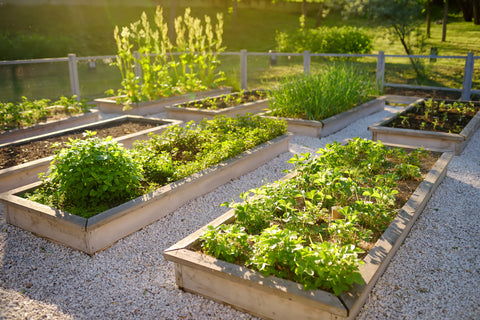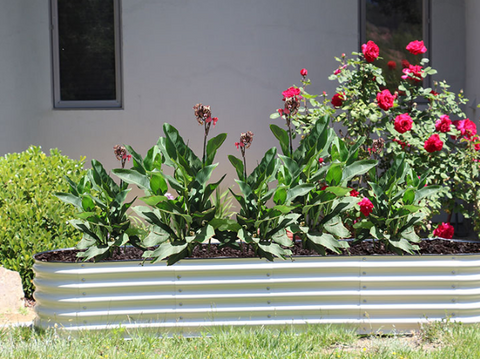Tips from Olle Garden Bed: 11 Ways To Attract More Pollinators To Your Yard
Attracting pollinators to your yard brings many benefits to your garden. It can not only increase visual attraction and many insects and animals, but also increase production. By creating ecosystems, you can also reduce pest opportunities, which means your plants have more opportunities to thrive. The following content also has some reference value for raised garden beds.

There are many ways to attract more pollinators to your yard. Even if you only do some, you will benefit quickly.
- Let it grow
One of the easiest ways to attract more pollinators to your yard is to do nothing. When you let your grass and even weeds grow, you create an ecosystem for insects.
Although the bugs in the backyard may be troublesome, please consider leaving a part of the property uncut. Even a small piece of long grass and dandelion can do its best to help the local bees and butterflies.
If you have sunflowers, please use them as natural bird feeders in autumn and winter. All the birds and tits will flock to your yard.
- Discard grass
Another option for its growth is to completely abandon the grass. If your law allows, consider using plants instead of grass. This will not only save you time mowing, but also bring all pollinators to your yard with the flowering plants you plant in this space.
- Planting a variety of native plants
Whether you use a garden to replace the grass or add new flowers to the bed, you can choose a variety of local plants. This is one of the most important things you can do to protect the local endangered pollinators. Native plants attract more wildlife than alien species. For example, milkweed is an important plant of the endangered monarch.
Cultivate a variety of native plants, including herbs, fruits and flowers. Sunflowers are a great choice for all pollinators. They perform an amazing performance in the garden. If you plant leeks and onions near apple and pear trees, bees will be happy because they don't like to go far between plants. It can also increase the pollination of fruit trees.
- Avoid using chemicals
Avoid using pesticides and fertilizers in gardens and yards. They are not only toxic to pollinators, but also systematic, which means they can infiltrate underground. If your neighbor uses pesticides, they can also affect your soil. When purchasing seeds, please pay attention to the chemically treated seeds. "Protected" may mean it is sprayed with insecticide.
- Leave the leaves
It may be tempting to pick up all the leaves and branches, but these are the perfect home for ladybugs and other insects. This is especially important in late autumn and early spring when these insects dig holes in winter. If you don't rake your leaves, they will not only provide a winter home for insects, but also decompose, providing important nutrients for your soil and yard.

- Rake rather than strike
If you can't help picking up your leaves, rake instead of blowing. The noise from the leaf blower will damage the communication of birds, and the gas device will pollute the air. Even electric blowers can destroy habitats, erode and dry soil.
- Turn off the light
Unfortunately, wild animals may not like flashing fairy tales as much as you do. Outdoor artificial light will affect the navigation, food seeking and reproduction of birds, bats and insects. When you go in, turn off the light, and your pollinator friends will thank you.
- Make your yard beautiful
Make your yard beautiful, which is very interesting for you and the local pollinators. Bees are particularly attracted to blue, purple, white and yellow. Use large pieces of plants of different shapes and sizes to create colorful flower arrangements.
Bees also like single or flat flowers, rather than fluffy flowers, so they can reach the nectar. Hummingbirds like colorful tubular flowers, such as blue flag iris and wild Columbine, because they eat insects in addition to nectar.
- Planting with the nose
When creating a garden, plant it with your nose. You can enjoy the pleasant fragrance and attract all pollinators to your yard. Strong aromas of sage, oregano, basil and lavender are particularly attractive to bees and butterflies.
- Cause a sensation
Install a bird bath in your backyard, and you will attract more than birds to your oasis. Bats, insects and even butterflies may soak for a while. For urban areas and dry climates, the provision of water is particularly important. Be sure to put some small stones in the bathtub, so that smaller pollinators will not drown.
- Building Homes
To reach the highest level, consider building a home for local pollinators. Wild bees, birds and bats are looking for home, which may decide your backyard is the perfect location. Dead trees can easily be reused as insect houses, and are popular places for wild bees to dig holes.

Attract all pollinators to your yard
Attracting pollinators to your yard can increase your harvest and make your garden an oasis of wildlife. Insects and birds urgently need suitable habitats, especially in the expansion of large cities. You can help pollination media and create your mini ecosystem in many ways.
